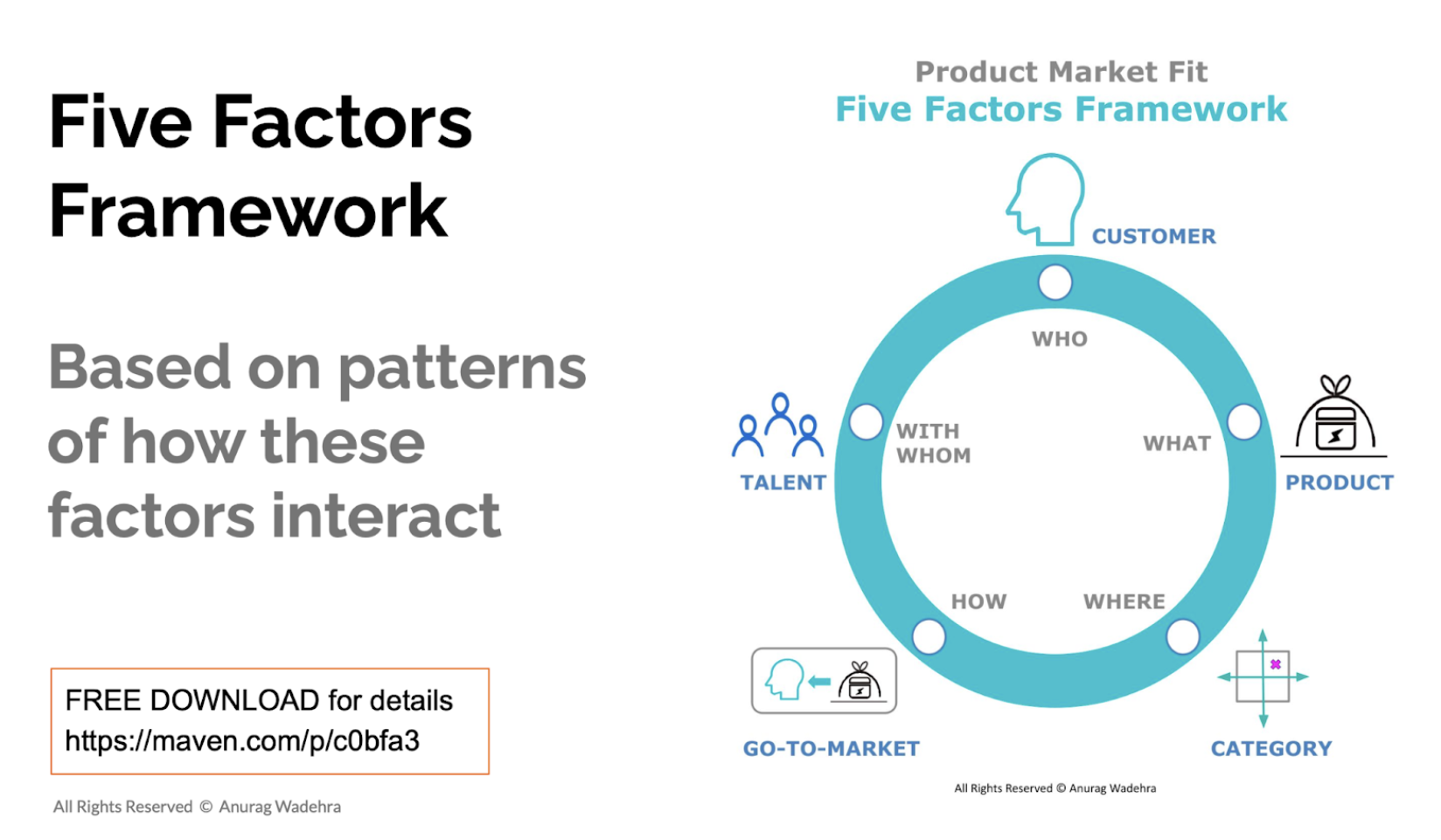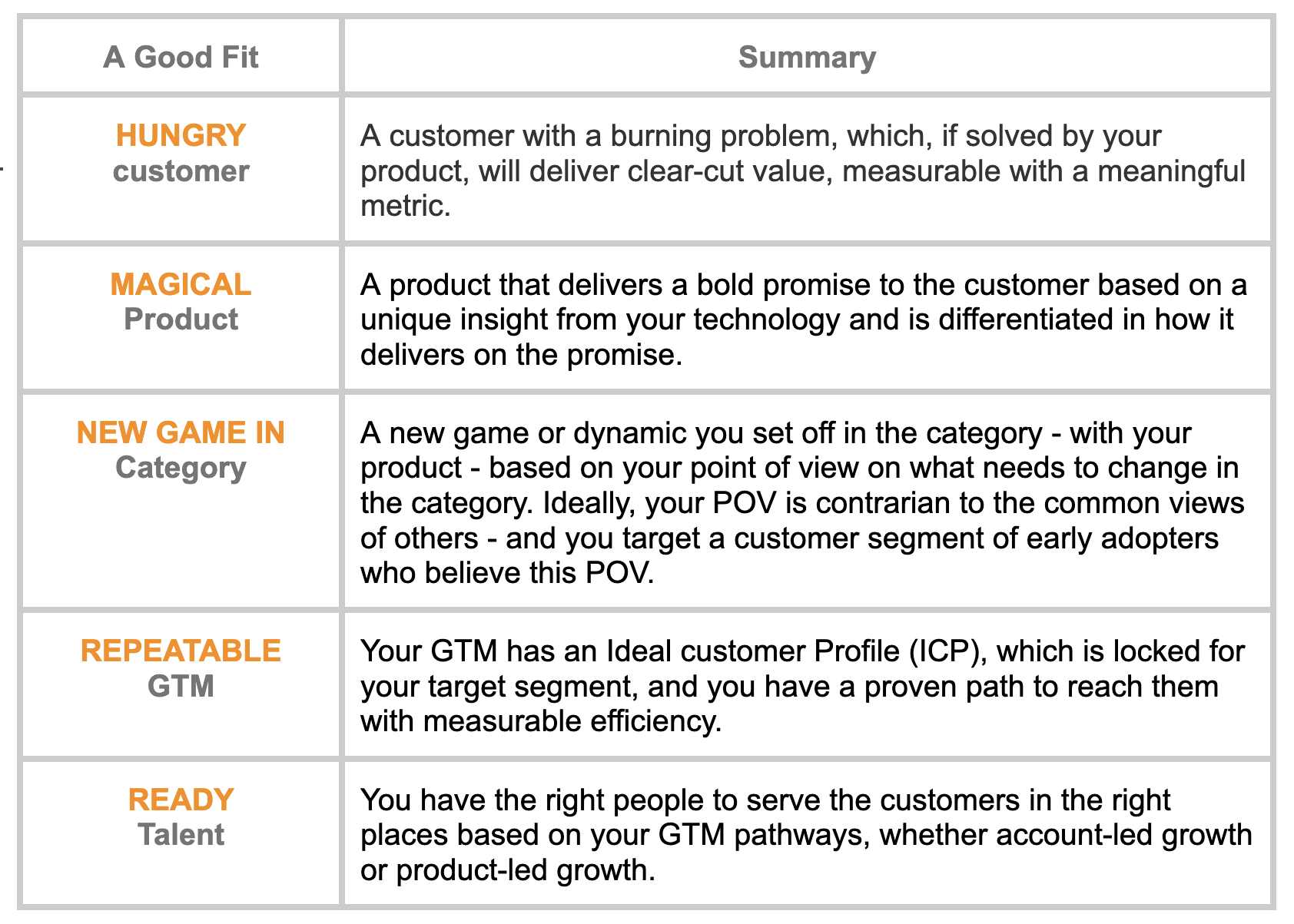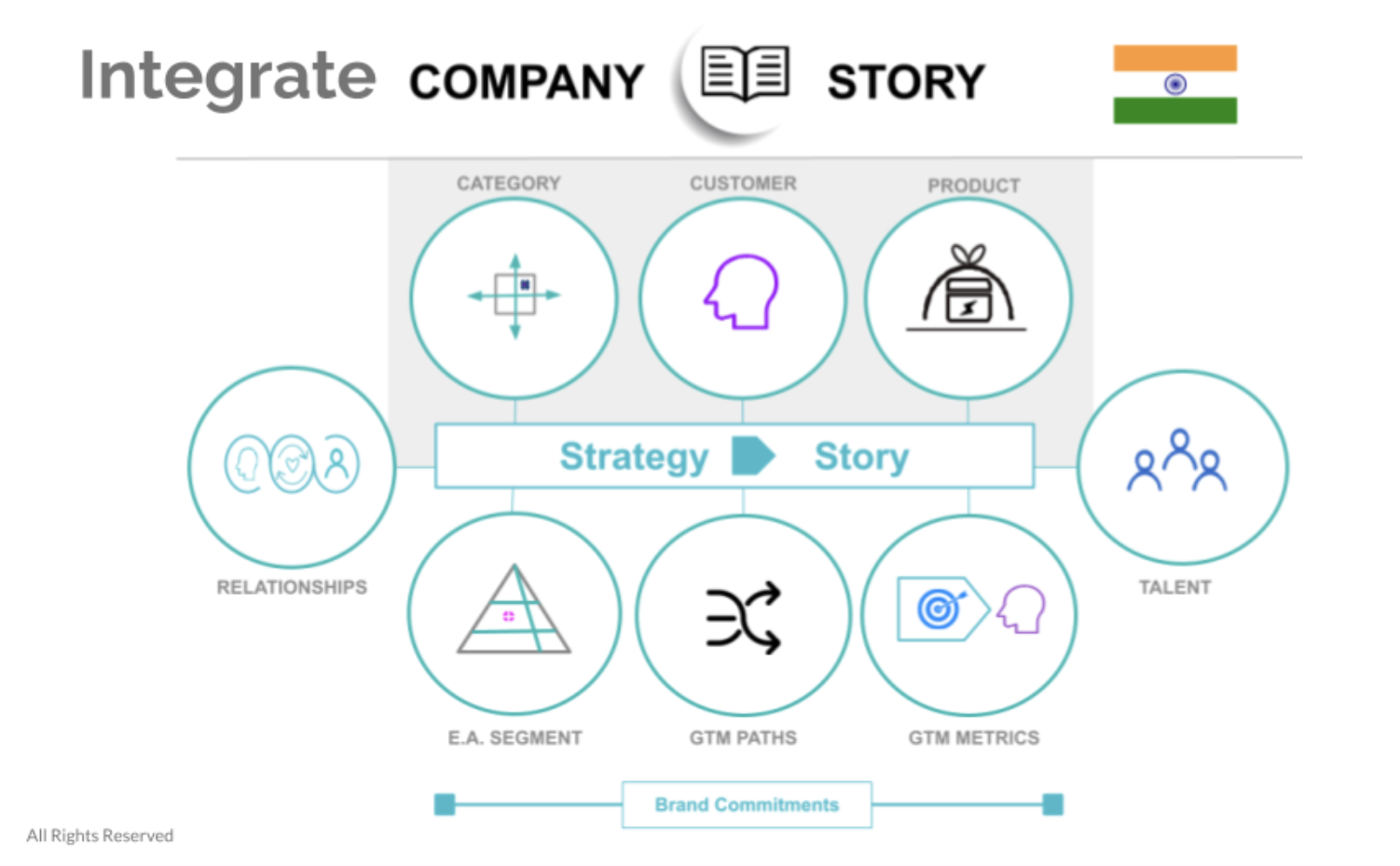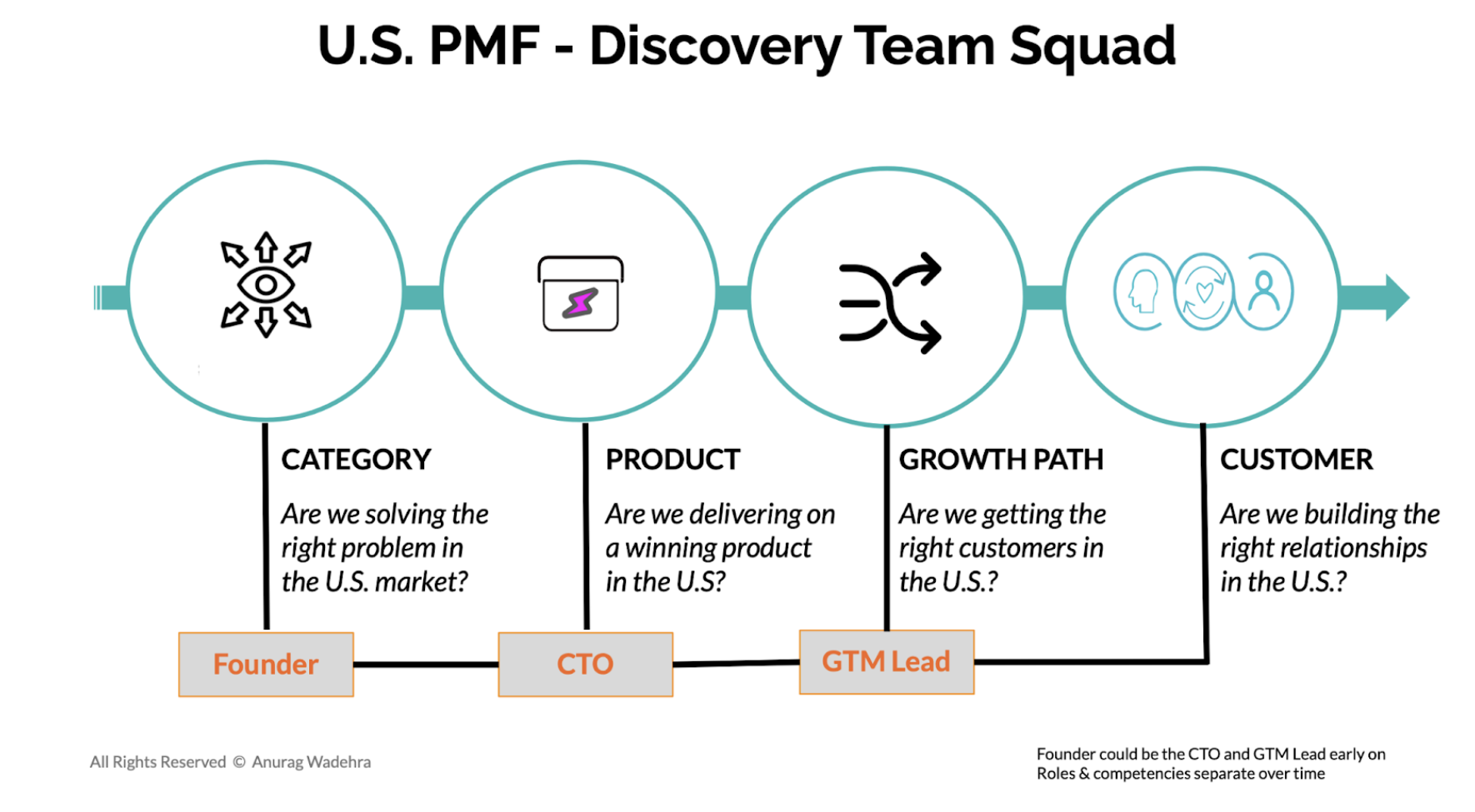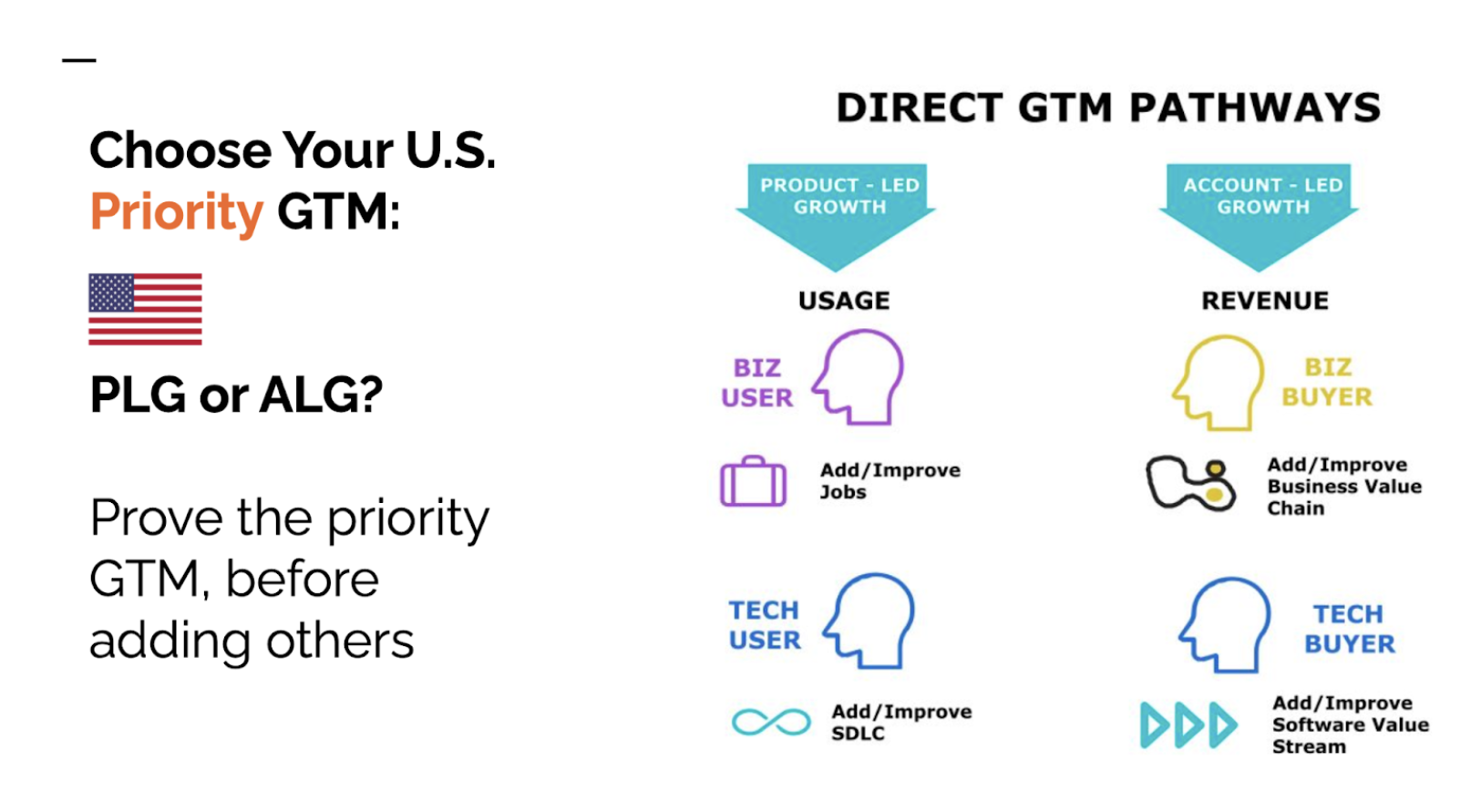Note from the Blume team
Anurag: “Don’t fall for the fantasy that you will have a bit of success in India, and then try out the U.S. on the side and hopefully get traction in both. Some first-time founders try to square the circle by attempting to build for India and the U.S. My advice is to stop immediately. Don’t do that.”
If this statement sounds like a contrarian take on SaaS GTM, you would love the rest of this article from Anurag Wadehra.
Anurag is a growth coach with over 30 years of experience as an operator in enterprises like Google and P&G and an operator/founder at six startups across data, cloud, and AI technologies. He has coached and mentored over 100 tech founders and operators and frequently organizes boot camps for young startups on PMF and GTM.
He recently addressed the Blume portfolio SaaS founders on “Finding PMF in the U.S. market.” In this article, he summarizes the framework discussed in the session and gives practical advice on how SaaS companies should approach the U.S. market. I absolutely loved his framework and hope you find something useful as you try to crack the U.S. market.
- Rohit Kaul
Your First Market: India or the US?
It is exciting to see startups in India pursuing the mantra Build In India - For the Globe. For the SaaS B2B companies, the U.S. is the most lucrative target market, potentially offering the largest rewards - in terms of growth, reputation, and scale.
Many India-based founders have asked me how to enter and win the U.S. market. This is a big topic, and a lot depends on where you are starting from, what you are building, and what your ambition is. There is a new generation of Indian founders ready to build directly for the U.S. as soon as they start, and it is heartening to see that there is no shortage of ambition in India to take on the world.
Here is the question I begin with for most India-based founders: which is your first market, India or the U.S.?
Risks of the U.S. as your First Market
Making the U.S. your first market is not without risk. Firstly, your entire product market fit (PMF) process has to be geared towards the U.S. This process typically takes 2-3 years for a B2B startup. So, not all Indian startups can afford to start in the U.S. market. There is a deeper reason for this as well. For an early-stage B2B SaaS company, a rapid customer feedback loop in their first market is critical for survival. Unless you sit with your customers to learn their pain points, iterate your product with them, and ship frequently, you’ll find it very difficult to get to PMF. Logistically this can be hard if you are bootstrapping directly from India into the U.S. market.
This also means you are competing against nimble U.S. startups who can walk down the street to sit down with customers or talk to them in the same time zones to get the same feedback you will have to get from across the globe. Conversely, you have the same advantage against them in India, where you have an easier feedback loop with your local buyers and your users.
When could the U.S. be your First Market?
There are times when it makes sense to enter the U.S. first. When you have an unfair advantage in understanding your category or industry, when you have deep access and insight into the U.S. buyers and users, when you can find the right design partners in the U.S. from the start, you could consider the U.S. market first. Perhaps you have worked or studied in the U.S. and have access to the above.
The bottom line is that your first market could be the U.S. if your value hypothesis - how your product delivers benefits to customers - is directly relevant to the needs of the U.S. businesses from the start. You would still need to learn and build for the U.S. industry regulations, implement the U.S. legal frameworks, and learn the commercial practices of the U.S. market. This is especially true if you are targeting regulated industries or large enterprises. What’s important to note is that the large market size of B2B SaaS is not a good enough reason to enter the U.S.
Unless you have such an unfair advantage, I advise the Indian B2B founders not to make the U.S. your first market. Your first market should be India.
Why not build for both markets at the same time?
Don’t fall for the fantasy that you will have a bit of success in India, and then try out the U.S. on the side and hopefully get traction in both. Some first-time founders try to square the circle by attempting to build for India and the U.S. My advice is to stop immediately. Don’t do that. This is perhaps a contrarian point of view because you might say, “I'm ambitious. I need to go across the globe. I have a lot of capital raised. I have big ideas, etc.” The reason not to attempt both markets is simple. Finding PMF in two different markets simultaneously is like running two startups. Your failure rate is not double, but orders of magnitude higher.
If you are an India-based B2B SaaS founder without any unfair advantage in the U.S. market, the most prudent path is to build for India as your First Market. Find PMF with early design partners in India, and validate your value hypothesis with India-based customers. Once on a solid footing, you can explore how to enter the U.S. as an expansion strategy.
The framework below assumes that you are past the stage of ideation, you have built a B2B SaaS product (even an MVP) for a few early customers or design partners in India, and you have found PMF in India/are close to it. And now, you are curious or ambitious enough to explore the U.S. as your expansion market. With this context, let us look at the framework that improves the odds of your U.S. market entry success.
Seven steps to finding PMF in the U.S. market
To reduce the risk of a failed or expensive U.S. market entry, here is a 7-step framework to consider. This helps you be more intentional in entering the U.S., especially if you already have some success in India.
- Audit your India PMF
- Begin with your India story
- Develop your U.S. PMF fitness hypothesis
- Set up your U.S. PMF fund & team
- Validate your U.S. company story
- Build your U.S. GTM & Talent for an early adopter segment
- Iterate for U.S. PMF in this segment
Step 1: Audit your India PMF
Start by auditing your India product-market fit. because if India is your first market and you have achieved PMF in India or are pretty close to it, then you have a good place to start.
Five factors determine where you are on your PMF journey. These are:
- Who is your target Customer?
- What are you selling to them? Product
- Where is your target segment in the Category?
- How are you getting to the segment? GTM
- With whom are you bringing the product to market? Talent
While most of these are self-explanatory, Category (Where) needs double-clicking as it can mean different things to different people.
A category is the problem landscape that your product fits in - along with the current competitive alternatives to your product. So, where do you choose to play in this landscape? How do you segment & target the category? By size - enterprise, mid-market, or startups? By industry? By usage? Where is your cluster of target customers?
This audit is like a calibration that helps create a context for your overall PMF. Think of it as building a compass. If your calibration reveals that your GTM is strong, but your product is weak, then you know that you have to work more on product-related issues. If your customer profile is not good and that's your weak link, you have to work on that. You can self-assess each of the five factors to get started. [Link to a free template to help in self-assessment is at the end of the article].
To check if you have a good fit for any factor, use the table below.
First, what’s your company story?
Summarize your self-assessment on these five factors into a narrative that is the basis of your customer, investor, or partner pitch. This is your company strategy reflected as a story - also called the value hypothesis. Nine out of ten founders have a weak story because they haven't thought through these factors. If you have a sharp understanding of the factors, your company story - or simply the brand story - is also clear and compelling.
A clear brand story is crucial as founders can’t keep the complexity of the five factors in their heads, nor can they explain it succinctly to their customers or employees. A brand story gives you a shorthand to ensure your audience understands your value proposition.
Based on your calibration, create the clearest brand story for your Indian market in this step.
Step 3: Develop your U.S. fitness hypothesis.
Before you think about your GTM motion in the U.S., address the crucial question: what is your product’s overall fitness to the U.S. market, based on your India success? To answer this, list your assessment of the India PMF audit for each of the five factors. Then apply your judgment to assess them on two criteria - (a) If there’s something similar and relevant between India and U.S. and (b) how credible and portable it is for the U.S. market.
For instance: You might have ten fantastic India-based customers. You may think they are hungry customers. Make a judgment call. How similar and relevant are they to the U.S. market? Are they global logos? Can they be used as a reference for entering the U.S.? Do they carry the weight and credibility?
Conversely, you might have a product in India that is credible to U.S. users that allows you to find an early adopter niche, say developers at startups, to enter the market through PLG (product-led growth). Maybe your GTM is unique to India, where it's working well, but there are only a few elements you can carry over. Maybe only the PLG or the sales playbook from India can be applied.
The main point is that as you build your U.S. fitness hypothesis, you’ll start seeing which parts of your India PMF are valuable to port to the U.S. If you skip this, you will either be overconfident about achieving PMF in the U.S. (confirmation bias) or under-leveraged in using what you may have.
Resist the temptation to perform random acts of GTM. “Let’s do something, anything. I happen to be on vacation in the U.S. Why not talk to six people? I happen to have launched a product - why not open it to the U.S.? It doesn't cost me to do some promotions.”
Such piecemeal GTM activities are distracting. By developing an explicit U.S. hypothesis, you are committing to discovering the full PMF in the U.S. (by testing the value hypothesis) rather than executing random acts of GTM, which can be very expensive.
At the end of this step, you should have a hypothesis for the U.S., which will look, for instance, something like this: I think my hungry customer is different - and here is how. My users are similar enough, and here is how my product needs to be tweaked for them. Only the PLG part of my GTM can be tested in the U.S., the sales motion will be tested later, etc.
Each company will have its starting point hypothesis to fine-tune its approach to the U.S. market entry.
Hey, if you like our content, why not get it in your inbox every month? Sign-up for our mailing list below.
Step 4: Set up a U.S. PMF fund & team
This may sound counter-intuitive: you want to ‘test’ the U.S. market and not commit to a full GTM. So why do you need to commit to a fund and a team?
The reason is that testing PMF in the U.S. is expensive - and can take 12 to 18 months of significant time for some of your top leaders, including yourself. Even if you don't officially call it a U.S. PMF fund, you should set aside dedicated resources to enter the U.S. Depending upon your business model, it might be equivalent to a seed round (a quarter to half a million or more) to dip your feet in the U.S. market.
The idea of a fund acts as a forcing function for you to decide whether you are ready to test the U.S. market. If you can’t commit $250k - $500k over 12 to 18 months plus. Your and your team’s time, you probably aren’t ready to enter the U.S. market.
If you decide to test PMF in the U.S., you should build a team with the founder at its core. The team is responsible for discovering the fitness of your product in the U.S. Typically, this means getting the right people for customer discovery (users & buyers) but with different sets of questions.
There are different questions for each member of the discovery squad. The founder must determine whether you are addressing the right category problem. The CTO has to find out whether the product will win in the U.S. The GTM lead has to discover the right path for U.S. customers. All along, you'll be figuring out whether you're building the right relationships in the U.S. These are four different kinds of questions.
As an early-stage startup, you may not have different people to add to this team, which is totally fine. The crux here is that you should know what questions you are looking to answer during discovery - a founder can tackle all of them or pull in relevant team members when needed. For instance, a founder not from a business/sales background can pull a GTM/salesperson into the PMF squad to better understand and iterate on the GTM questions.
Step 5: Validate your U.S. story
Now you have the U.S. PMF hypothesis, the U.S. PMF fund, and the PMF team. What should you do now? You build your brand story for the U.S. and test the story in the market.
You have an India story from your India PMF. Take that story and then create a U.S. story based on - What is similar & relevant, and what is credible & portable?
Minimally, your U.S. story has to be adapted to three questions to create the value hypothesis:
- What’s your New Category Game in the U.S. market, including your contrarian point of view? Which is your early adopter segment in the U.S.?
- Who is your Hungry customer with a burning problem in this segment? Who are the buyer and the user?
- What is your Magical Product for the U.S. market, including your unique insight and differentiation?
It is important to remember that you are not yet ready to execute a GTM motion because you do not know which part of your brand story will fit in the U.S. Changing your brand story is cheaper and faster than changing your GTM. You can recalibrate your brand story every 3 to four months, but if you get locked into a GTM motion and realize after 12 months you should have done account-led sales rather than product-led sales, you’ve wasted 12 months and real dollars.
For instance, I've known founders who came to the U.S. with a story, talked to 20-30 customers, and returned with the conviction that the story was not working. This is much cheaper than building a lead generation pipeline for six months and discovering the story didn't work.
Another example: I know of a company that built a strong pipeline of developers for their developer tool product using PLG motion. They did not test their story with the buyers of software tools and discovered when they entered the U.S. that software engineering leaders were not ready to purchase the product even though their developers were using it.
So, if you don't have clarity on these three things - your new category game, your hungry customer profile for both buyers and users and the differentiation of your magical product - do not execute on GTM or talent plans.
Step 6: Build your U.S. GTM & Talent for an early adopter segment
Once you have validated your U.S. story, you are ready to begin executing with the right GTM motion and the team. But where do you enter the U.S. market?
The answer is to find a customer segment who can become your early adopters. These are hungry customers, desperate to solve their burning problem, and believe in your contrarian view of the category. Therefore, they are willing to take a chance on a startup from India by considering different evaluation criteria more favorable to your product than the alternatives. From your story validation process, these are the buyers and users most ready to work with you.
One of your biggest questions now is choosing your core GTM motion. There are multiple pathways into the U.S.: two common ones are Product-led Growth (PLG) and Account-led Growth (ALG or sales-led). Others are channel-led or community-led, less common, and unique to certain business models.
My main advice is to choose your priority GTM and build excellence around it before layering on other GTM motions. This is because the GTM execution is hard enough for a single path. If you have a superior product, you use product-led growth to go after users but choose carefully whether to go after a business user or a tech user.
If you're going with a sales-led motion, be clear about whether you are going after a business or a tech buyer. These are important considerations because the value frameworks differ for each audience. You will need to build expertise on each of these to achieve growth.
My second piece of advice is to add highly specific, selective talent in the U.S. based on the types of customer relationships you need to develop in your early adopter segment. For instance, if you lead with account-led GTM motion, and your business buyers expect high relationship intensity around your complex products, you need to have a strong local sales team. On the other hand, if you are building a user-focused product-led GTM in the U.S., you may need dedicated product managers, customer support, and community managers serving your users to grow the U.S. business.
The next hard question is, where should you build your team? You need to decide whether these relationships need to be built and sustained locally in the U.S. or can be managed remotely from India. This depends upon several factors, such as customer experience, GTM, product requirements, and business model. You will also need to decide whether to build out these teams for the U.S. market, top-down or bottom-up.
Step 7: Iterate for U.S. PMF in this segment
The U.S. PMF is a long process, often taking 2-3 years or more for tech companies. To navigate this journey, you need to iterate based on the build-measure-learn feedback loop. The Five Factors framework gives you a way to do this by calibrating your fit to market every 3-4 months and testing your changes to story and GTM as you run experiments with your early adopter customers.
Conclusion
Finding PMF in the U.S. for India-based SaaS founders is a complex matter requiring careful consideration of the following questions: What is your first market, India or the U.S.? Most of the time, India should be the first market where you invest to achieve PMF or get close to it. The U.S. may be the right market to expand into, but founders must pay attention to common mistakes in entering the U.S. These mistakes can be minimized with a stepwise framework that begins with auditing your India PMF and story, building your value hypothesis for the U.S. market, and then pursuing market entry with a long-term perspective (PMF fund and team). Crucially, founders need to validate the U.S. story before committing to GTM programs or talent on the ground. Finally, the founder and PMF team must iterate to find PMF in an early adopter customer segment in the U.S. before expanding.
Edited by Rohit Kaul
References & Links
- WORKSHEET: Find Your Baseline PMF Score — WORKSHEET by Anurag Wadehra on Maven
- Intro to Five Factors Framework: Finding PMF — A market-driven approach by Anurag Wadehra on Maven
For more from Anurag Wadehra, visit:
- Blog Growth Matters: www.anuragwadehra.com
- Course: PMF Bootcamp
- Course: PMF Essentials for Entering the U.S. Market
- Social: Anurag Wadehra | LinkedIn



